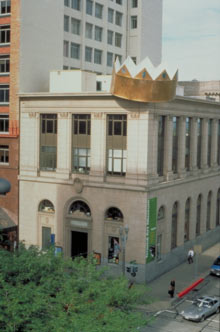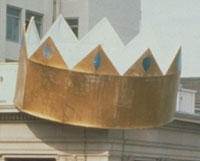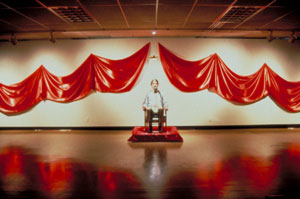The Spiral Carnival, 2024

Temporary installation with sewn fabric flags, fabric sculpture, wooden dowels
Location: 42°48'20 N. 120°47 30 W.: Playa Summer Lake, Great Basin, OR
Dates on site: October 25 – 27, 2024
Size: 2’h x 75’ w x 75’ d
The Spiral Carnival, an artist-initiated project exploring the complex and often unseen playa environment, explored the rural frontier as a living space full of vital, microscopic life. It was presented on the dry lake, a northern lobe of the Great Basin as part of my artist residency at Playa Summer Lake (playasummerlake.org).
The artwork is comprised of 300 triangular flags spaced 24” apart and planted in a coiled path, referencing roundworms that digest fallen leaves, insects and vertebrates, helping in the soil-making process. Three hundred custom-made nematode flags fluttered along a coiled path meant to invoke the roundworm’s typical resting form. This coil opened to the southeast, source of the subterranean flow of the lake waters. Centered in the coil is the miniature big top, opening to the playa. The copper, silver and lilac fabrics draw on the landscape hues.
The 75’ x 75’ coil was oriented to east south east, aligned with October’s sunrise and the subterranean flow of the playa water. Thanks to Playa the artist-scientists Susan Circone and Kathy Cashman who helped in the installation.
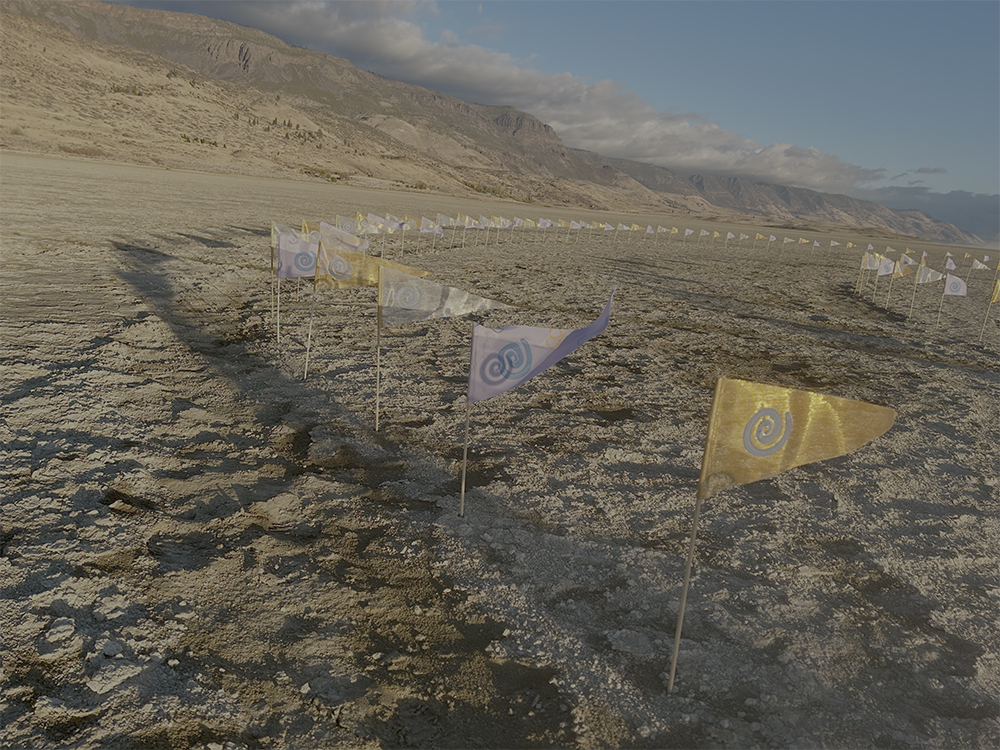
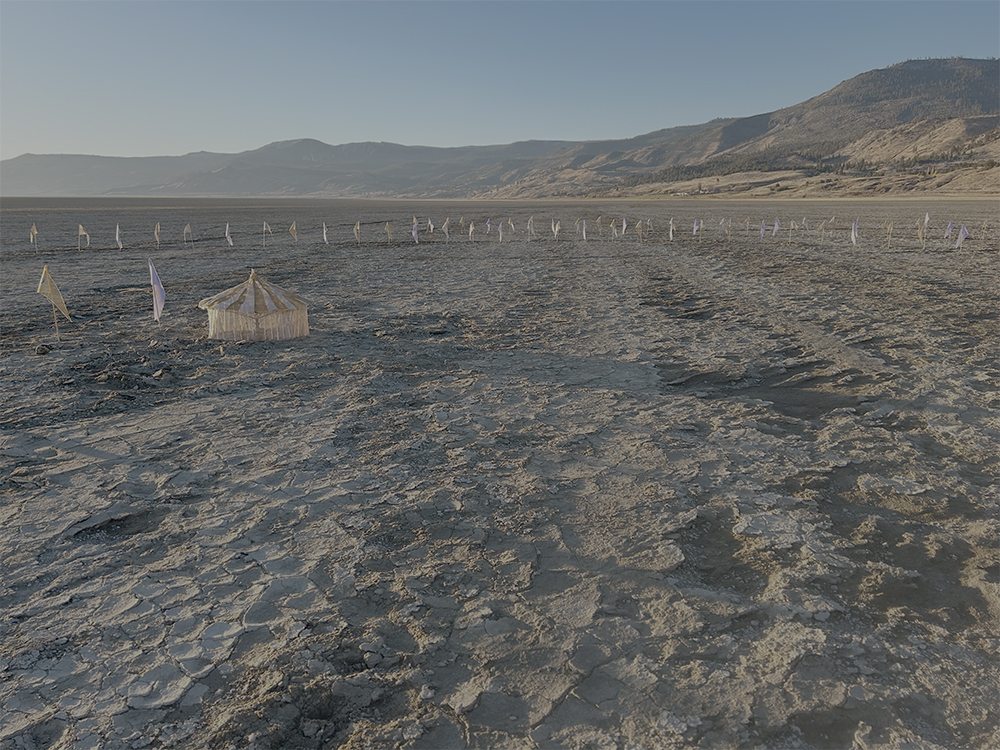

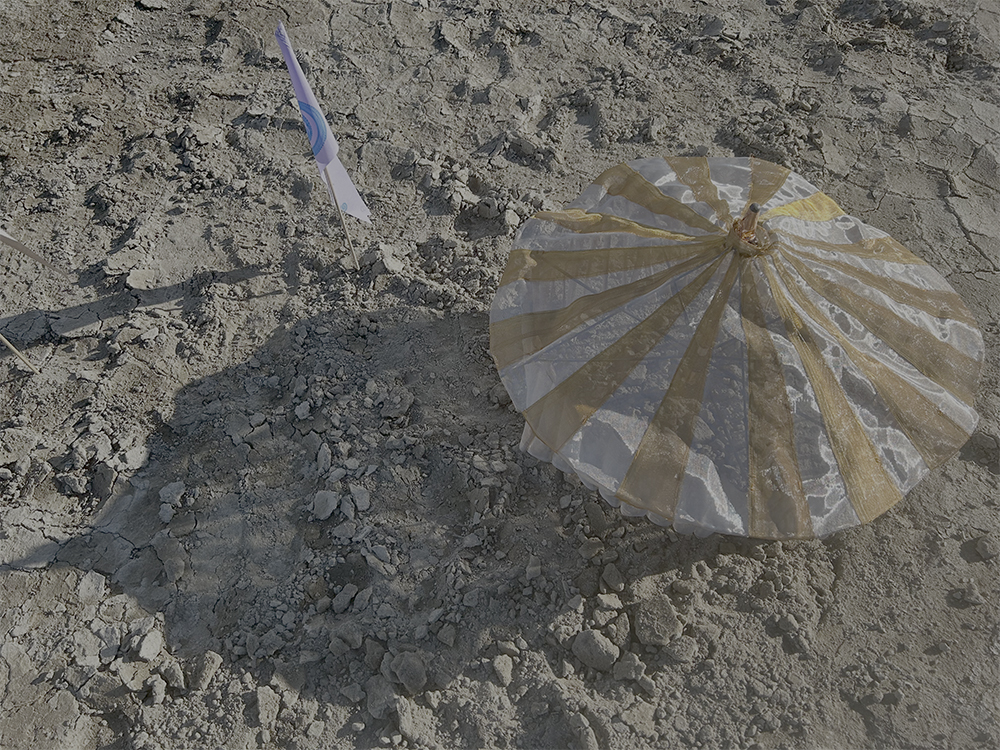
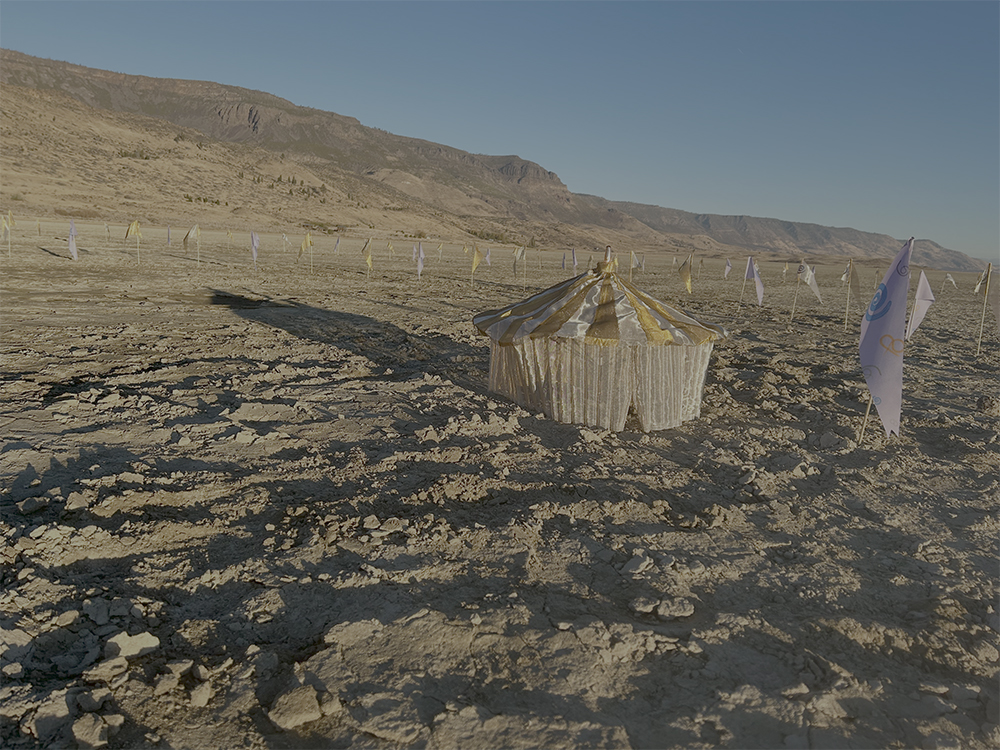
Theatre of the Roots
Bilpin International Grounds for Creative Initiatives, New South Wales, Australia
2022
'When you live in the forest, you see things..'
So begins Theatre of the Roots, a narrated installation created and presented for a residency in Australia’s Blue Mountains. The delicate stage and root backdrop were defined by hand-crocheted mason line. A life-sized mylar ghost tree was the stage curtain, raised and lowered to reveal activity. My offstage narrative explored the roots’ lifestyles, constructing and repairing the earth as it recovers from mining and high intensity forest fires.
Theatre of the Roots is sponsored by science and made possible in part by the University of Sydney School of Life and Environmental Sciences research in plant cognition.
 |
 |
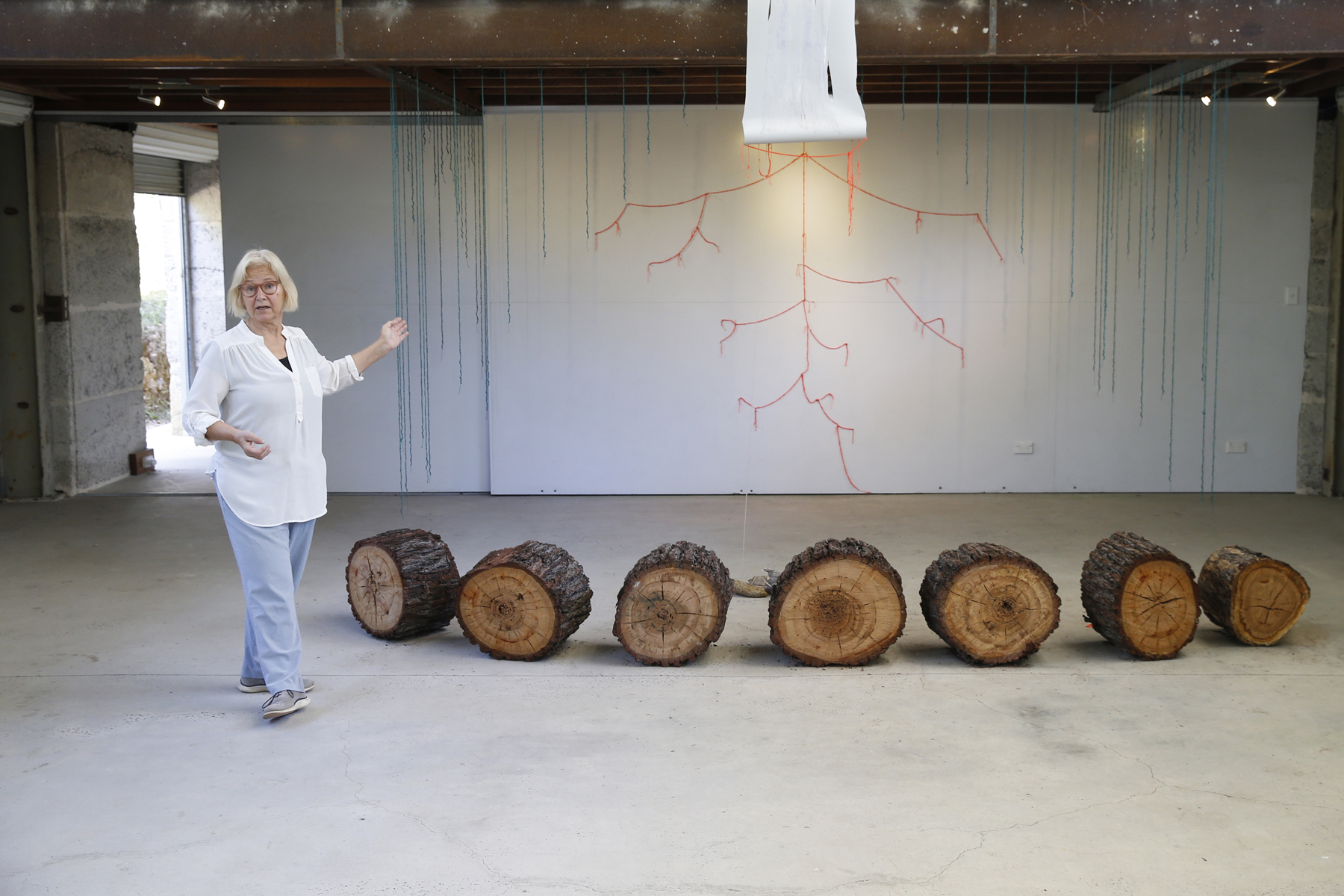 photo courtesy BIGCI.org |
|
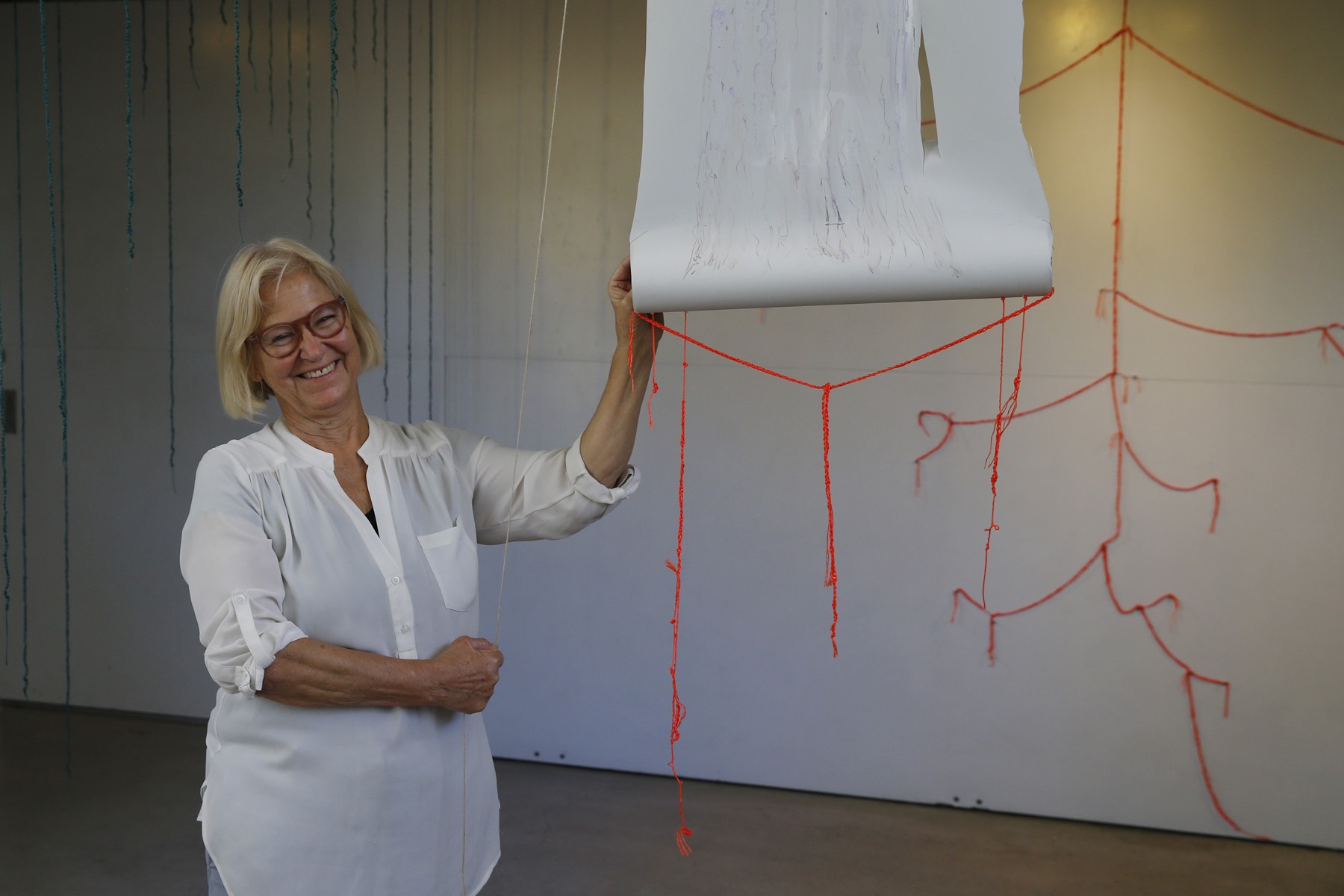 photo courtesy BIGCI.org |
|
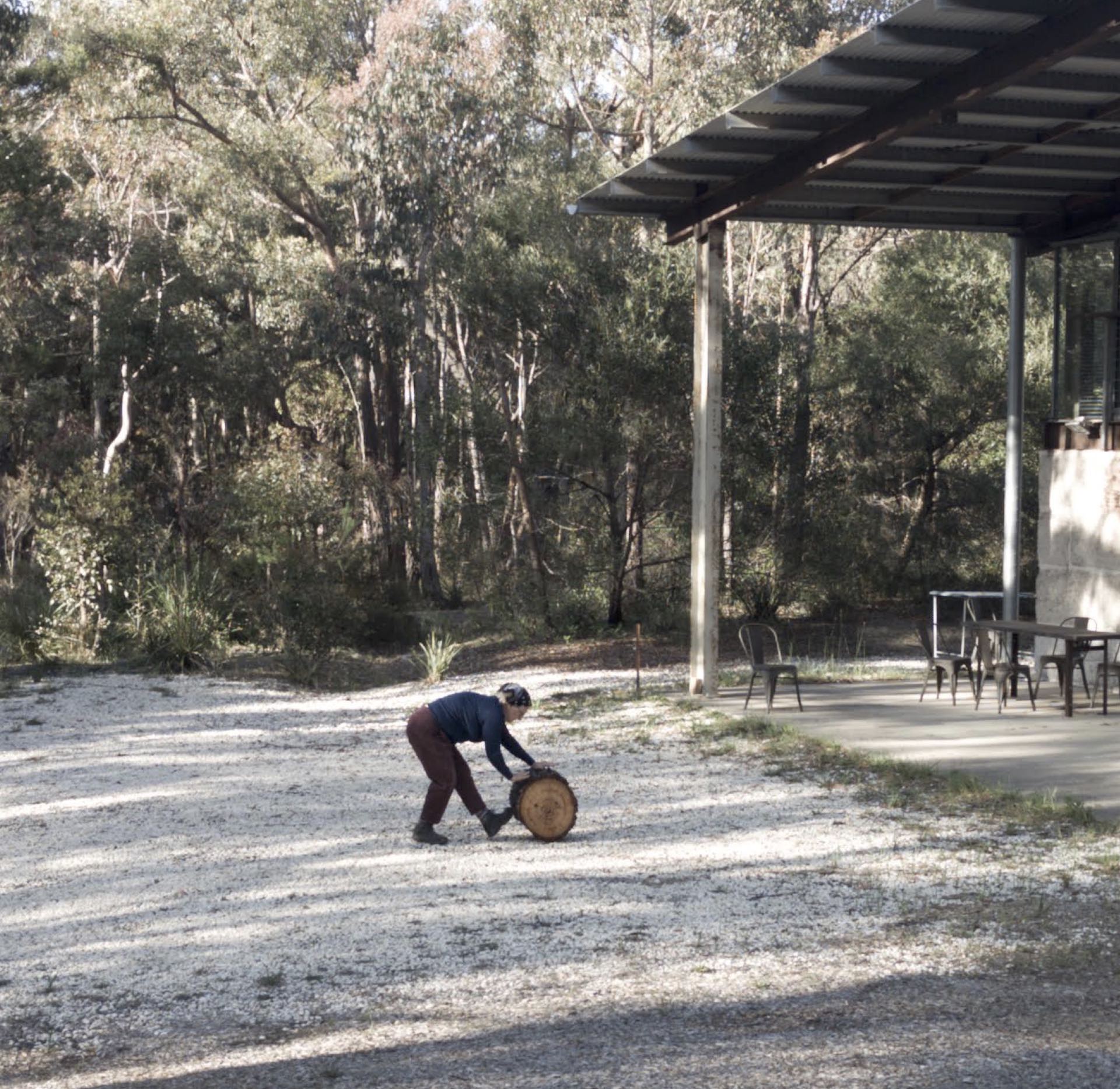 photo courtesy Linda Erzlinger |
|
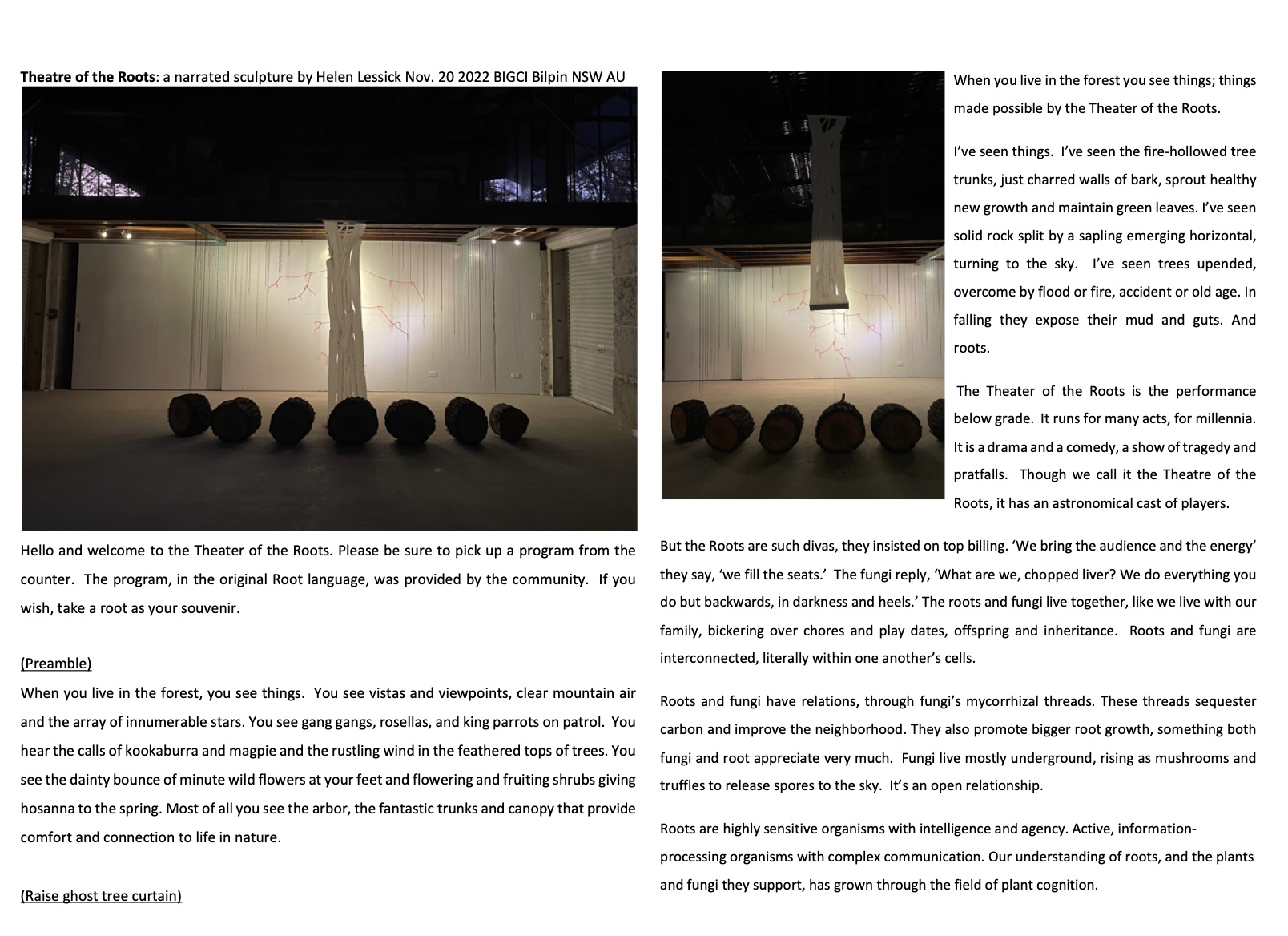 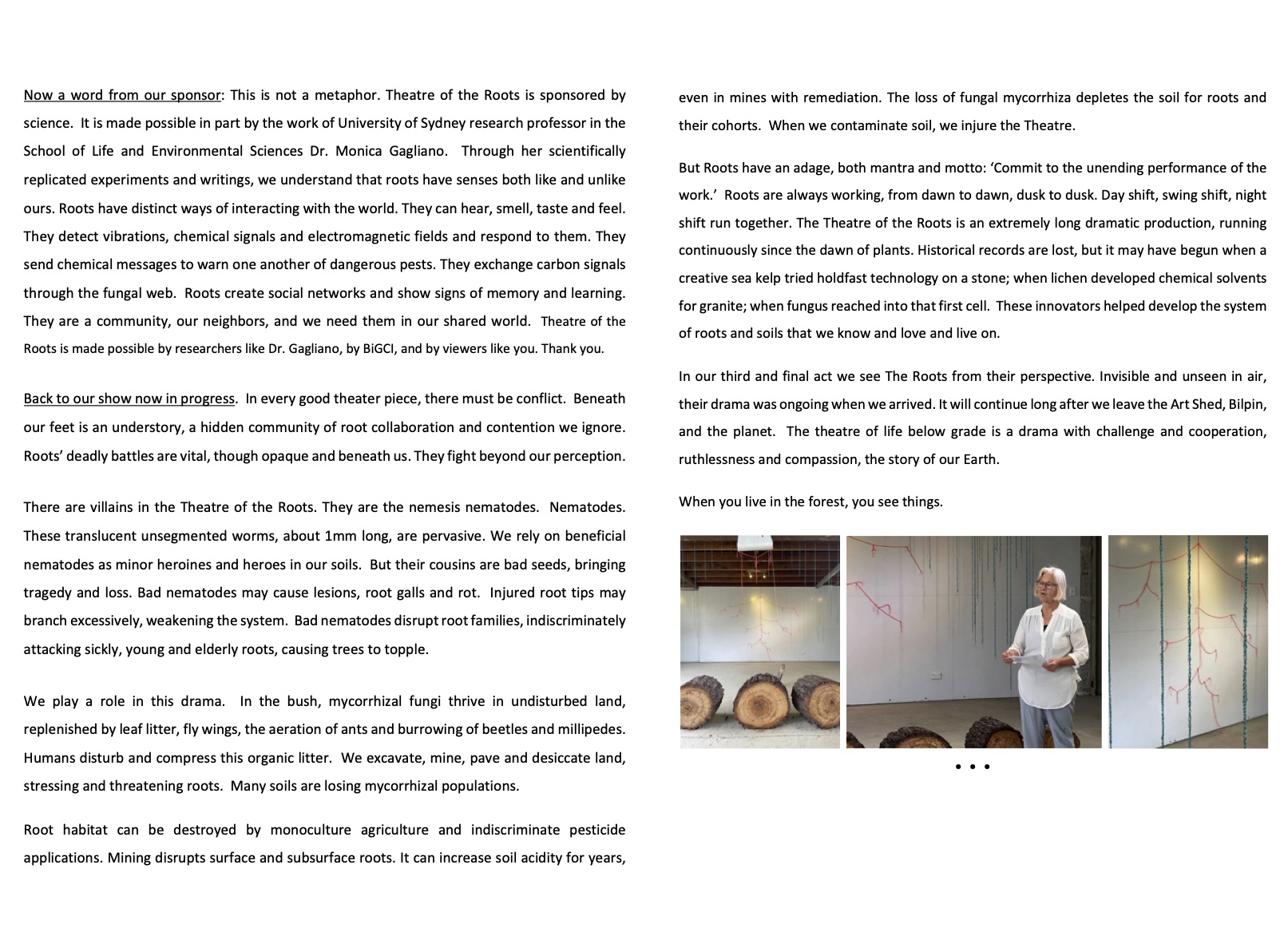 click the images above to enlarge |
|
Sweeper
Cypress College Art Gallery |
Cypress, CA
2019
Sweeper is an installation of two motorized brooms, sweeping clockwise and counterclockwise. The modified commercial brooms, installed at Cypress College Art Gallery, generate small eddies and mirror cyclonic systems. The push broom and household broom explores the duality of interior and exterior; north and south hemispheres; cleaning up and tossing out.
The Sweeper Dance was a collaborative improvisation with the Cypress College Dance Ensemble, responding to the installation and the related video Kepler’s Dream. The work of the costumed dancers was accompanied by the artist reading an excerpt from Johannes Kepler’s Somnium text.
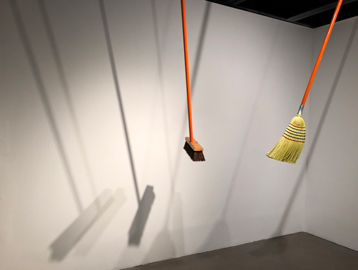
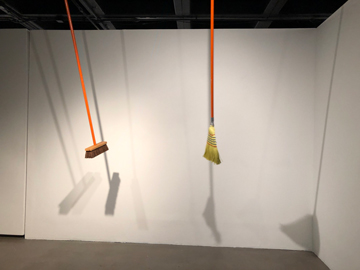
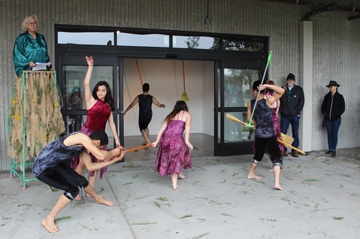
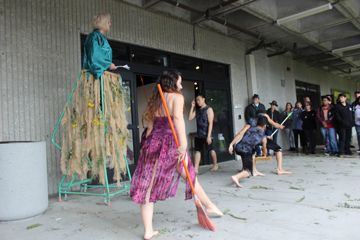 Performance photos: Miranda Trujillo
Performance photos: Miranda TrujilloQuercus Installed
2017
Originally designed as temporary public art, the twelve elements of Quercus can be experienced in a gallery setting.
Quercus Installed consists of twelve mirrored stainless steel silhouettes of acorns and eggs are sequenced like a clock face. Fine painted lines mark each silhouette to represent the electrical impulse of plants and the heartbeat of animals.
Installated at Jeffrey Thomas Fine Art, Portland, OR
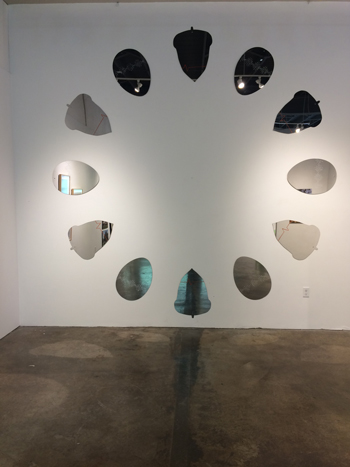
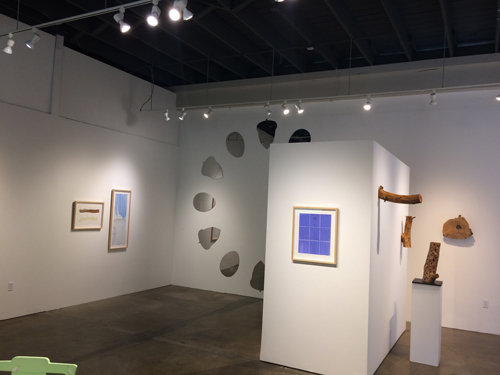
Becoming
2011
An interactive installation with sculpture with video, Becoming consists of a suspended column made from fluid, metallic bead chain and three suspended commercial pails. One pail spills light through drilled holes; one holds a video loop exploring seasonal water cycles; the third is hung beyond viewer’s access and its contents remain unknown.
Installation created in the Hoffman Gallery, Lewis and Clark College, Portland for the Bonnie Bronson Fellows: 20 Years exhibition.
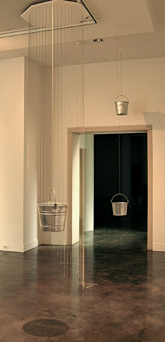
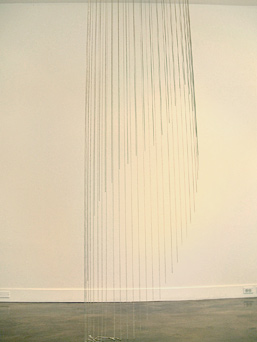
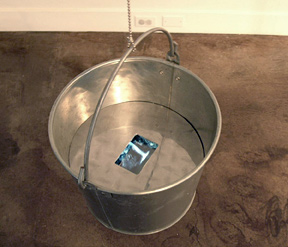
Untitled (the night sky)
2009
An installation of 23 altered and suspended pails forming the constellations Ursa Minor and Hydra framed by a hand-painted sky blue wall at Barbara Davis Gallery, Houston. The empty buckets are suspended voids, reminding viewers of phenomena made invisible during daylight hours.
The pails, in three sizes, spill light through holes drilled in the sides.
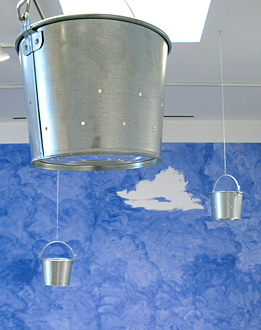
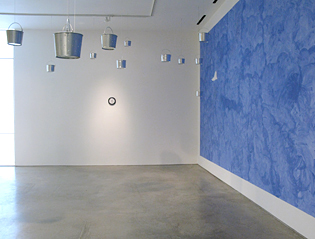
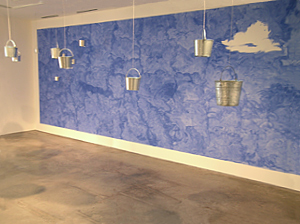
River/Water/Shed
2002
Created on the concrete banks of the Los Angeles River, River/Water/Shed consisted of 50 small house silhouettes painted along a quarter mile slope.
Though most silhouettes were painted in liquid plant food tinged with watercolor one, sited near an ant colony was painted in honey, and two, near a copse, were painted with syrup and bird seed.
Created for River Alchemy, Arroyo Arts Collective of Los Angeles.

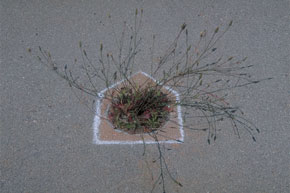
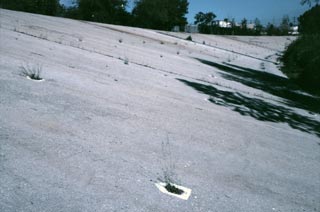

The American Century
1997
This site-specific installation relied on the orientation of the building and movement of the sun to activate the experience of the art. The hangar, aligned to a north /south axis was 60 x 120 x 80’ deep. The east and west walls were glass, allowing large images of boats to project into the space and sail across the interior floor, as the day passed.
The east wall displayed a Sumner class destroyer silhouette. The west wall held an empty row boat with oars floating off.
The work was created for the Seattle Arts Commission, Seattle, Washington.

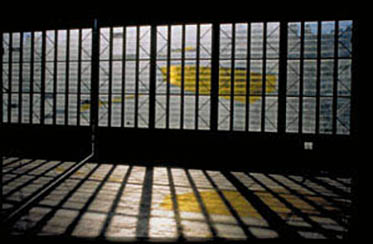
The Crowning Glory of Tacoma
1995
The Grand Crown was the largest element of the Crowning Glory of Tacoma, a one-person, multi-site exhibition throughout the Tacoma Art Museum in Washington State. This interactive installation included a Coronation Room, participatory parade, and significant hats on all street level windows.
The Grand Crown, made of gold vinyl over an aluminum frame, sat at a jaunty angle on the Museum roof.
